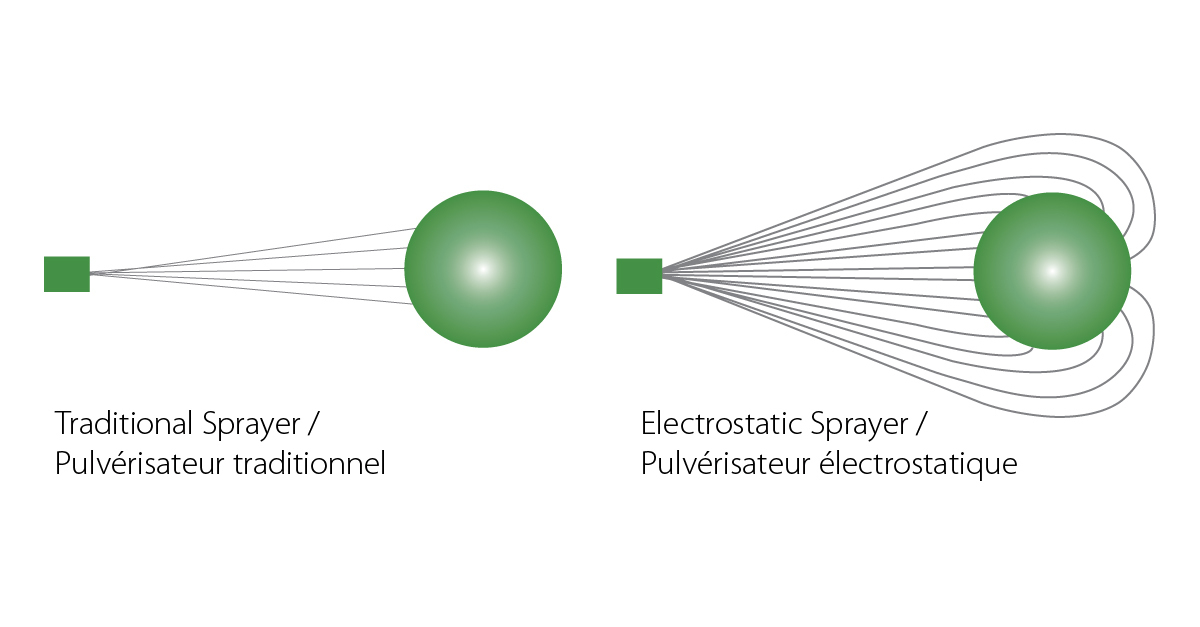Victory Electrostatic Sprayer Troubleshooting Tips
This troubleshooting guide lists common problems faced by those using the Victory Electrostatic Sprayer. Use these resources to help you identify and resolve the most common problems that are closest to your situation. Please contact us if you need further assistance.
Electrostatic Spraying 101
Victory Backpack Extension Wand

Electrostatic Efficacy Test
Electrostatic sprayers provide an electrical charge (positive or negative) to a solution that is being sprayed on to surfaces or objects. All particles being sprayed are charged with the same polarity, meaning they will repel each other maintaining equal distance and size as they are projected towards a surface. The charged particles have a force up to 75 times that of gravity, creating an aggressive attraction towards the object being sprayed versus falling due to gravity. The charged particles do not land on each other, so they evenly spread out across the surface providing uniform coverage of the solution. The charge also allows the particles to seek hard-to-reach areas and wrap around surfaces where normally sprayed materials cannot reach.
Download the full document here.

Electrostatic Discharge
When we apply a positive electrostatic charge to a chemical solution, the opposite negative charges will typically be conducted back to the operator through the grounding strip in the handle of the Victory Sprayer. If the environment being disinfected is not conductive to natural electrostatic charge dissipation – for example, if there is an ample amount of insulation material in the area or on the user, such as rubber, or there is very little humidity in the air – ESD events may occur.
Download the full document here.

EPA Statement
The EPA recently issued new guidelines on electrostatic sprayers, which is attached. Victory views the new EPA guidelines as a positive. A summary of the guidelines, and the potential impact on Victory, is here.

